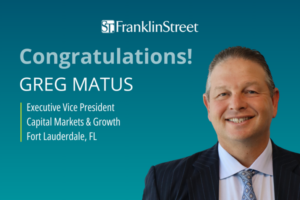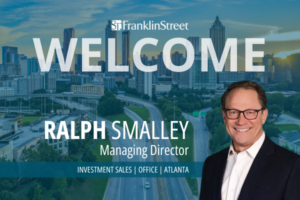Like many, six weeks ago I couldn’t have named the territories that comprise the U.S. Virgin Islands. But when two Category 5 hurricanes struck the islands over a span of 14 days, I started reading about the islands of St. John, St. Croix, and the capital, St. Thomas.
On Sept. 6 Hurricane Irma, with winds that reached 185 mph, devastated St. Thomas. Then on Sept. 20, Hurricane Maria wrecked what little was left. (For perspective, Tallahassee encountered top wind speeds in last year’s Hurricane Hermine of approximately 80 mph.)
Watching the news coverage, I was struck by the unique challenges of sending relief supplies to an island. Reading online about the hurdles of getting large quantities of donations delivered to a Miami dock, packed into a cargo container, shipped a thousand miles, and then unloaded and distributed on a barely-navigable island had me wondering — what if small amounts of supplies were just packed into suitcases, flown over, and delivered by a jeep? I decided to try it.
I collected donations for three island organizations, boarded a 5:45 a.m. flight out of Tallahassee, connected in Atlanta, and by 1:30 p.m. I was descending into St. Thomas’ Cyril King Airport.
The plane was barely two-thirds full; many passengers were relief workers, including Red Cross, FEMA and mainland utility power-line workers. Upon final approach, I leaned toward the window and the relief worker next to me pointed out the catastrophic nature of what we were seeing — the indigenous trees which should have bent, were instead, sheared in half. The number of blue tarps covering structures with no roofs. The magnitude of what I was about to witness set in.
My first delivery was to the Animal Humane Society. As you might expect, they were inundated with animals. Rather than its usual dozen felines, the organization was providing for nearly 40 cats. Instead of its normal 35 dogs, they were caring for more than 75.
Some of the cats and dogs had been accidentally separated from their owners during the storms, while others had to be temporarily cared for because their “parents” had lost their homes and people shelters would not (or could not) accept pets.
Island accommodations and meals were sparse. With no hotels open (or scheduled to open for at least 6 months), I had located one of the few Airbnb accommodations with a generator. There was an island curfew of 7 p.m. and shorty thereafter, all across the island, any place with a generator would begin using it for a couple hours each evening — to run a pump for water or to receive limited air-conditioning from a window unit.
I had brought granola, peanuts, water and Gatorade. I found coffee at Lattes in Paradise, and located Brooks Bar, which cooked whatever fish had been caught that day. There were no menus.
I marveled at the locals running the island on piecemeal supplies. With the power grid almost totally destroyed, less than 10 percent of the island had power, leaving no working street lights or traffic signals.
Schneider Regional Medical Centre, the island’s one hospital, had to evacuate patients from the 3rd and 4th floor because of severe roof damage. The one Home Depot was so damaged that customers had to be escorted by employees to navigate the aisles.
A solar panel field was destroyed. Power poles leaned precariously or criss-crossed roads. Boats and truck trailers were turned over and sections of roadways were washed away. A church in Magens Bay was ripped in half and stood exposed, the chandeliers and speakers still hanging from the ceiling weeks after the storm had passed.
At my second delivery, the Montessori School and International Academy, I was warmly received. The school teaches toddlers through high school, and while normally the student population would be about 300 children, that day it was less than 140. The school felt, however, it was important to reopen as soon as feasible. It provided parents with additional resources, as well as helped the children — many of whom had their homes destroyed — return to some sort of regular routine.
My final delivery was to the accounting firm of Benham & Hodge, located in the town of Charlotte Amalie. These accountants, in conjunction with donations received from the Tallahassee-based Florida Institute of CPAs, had agreed to distribute supplies to help other local accounting firms keep their doors open. The more businesses continued operating, the sooner the economy could heal.
By departure time, I was ready. Three days with no hot shower and virtually no power or air conditioning had me ready for home. It was three days of no television and no snacks, which felt terrific, but it was also three days of solid reminders of what really matters.
Overall, it was a harder trip than I had thought it would be. And it was sadder. But one of my lasting impressions was found outside a storm-ravished home — it was an old truck with a new American flag. They are coming back, I thought, and so will I.
Dave Curry is a Tallahassee resident and commercial real estate agent for Franklin Street.



